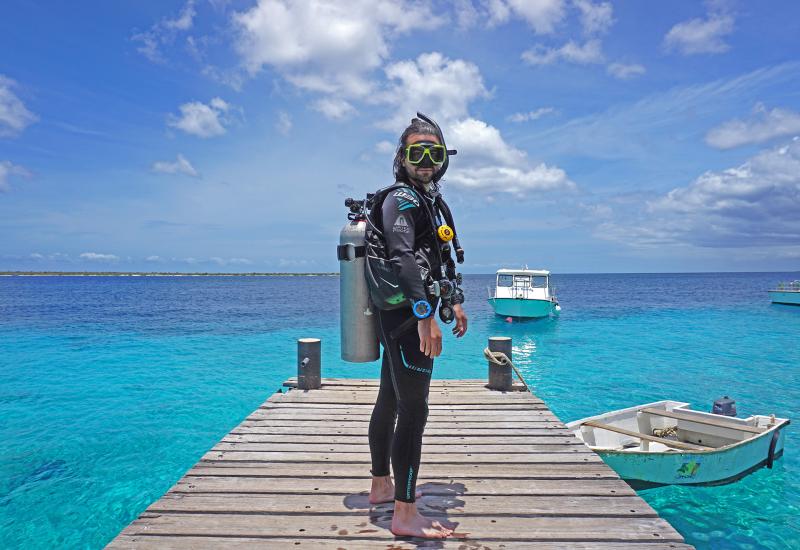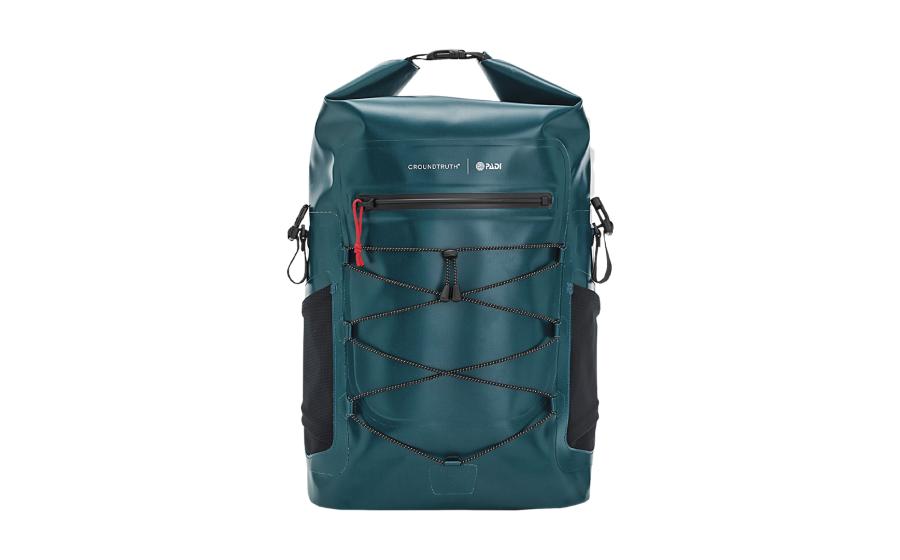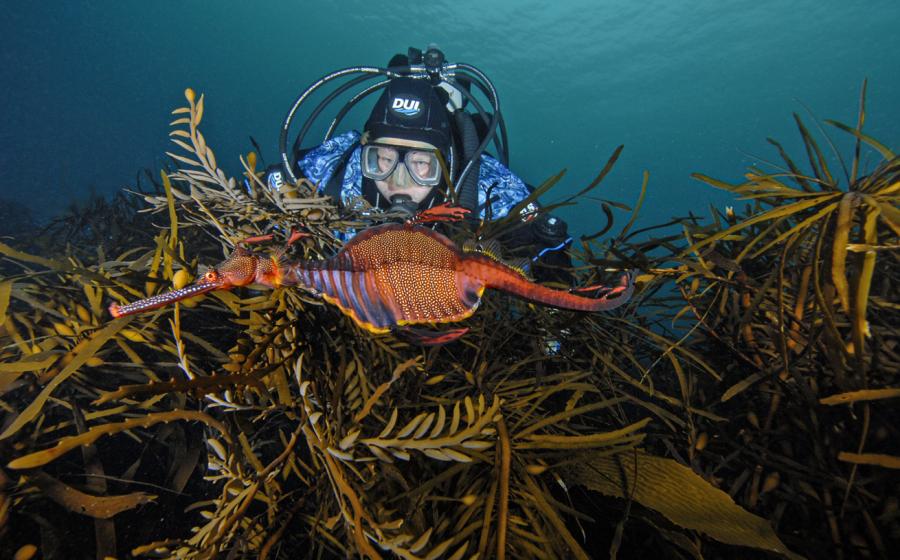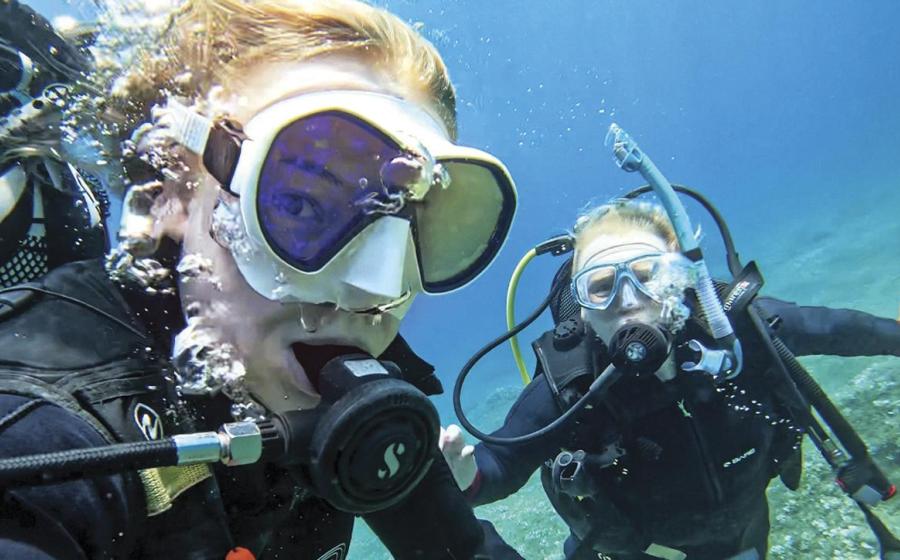Ask An Instructor - September 2006
By Michael Ange
Q: I'm going on my first night dive soon. Other than buying a big honkin' light, what should I do to prepare?
A: All humans tend to fear the unknown, and for first-time night divers that means what we cannot see in the water. Your solution--to light up the night sea with the biggest light you can find--is a common knee-jerk reaction to this fear, but in the long run it's not the best option. Ask your instructor or any of your dive buddies with night diving experience what light they'll use on the dive, and chances are it's a moderately sized light.
For starters, it's actually rare to find a night dive site that is truly pitch-black. Once your eyes have adjusted to the conditions, you'll be amazed at what you can see with no light at all. Relying on too much artificial light ruins your night vision and prevents your eyes from acclimating to the conditions. That's why dive operators often turn down the boat lights before divers enter the water--they're trying to help your eyes adjust. Another thing to consider is the marine life you're diving to see. Most fish and critters will flee from an oversized light, and you'll miss the action.
More night diving tips: Be sure to review night diving signals and procedures, so you can communicate without blinding your fellow divers. Shine your light downward on your signaling hand to illuminate the conversation. Review signals using the light (a circle means OK, rapid side to side movement means attention!, etc.). And never, ever shine your light in another diver's eyes. Also think about how you will attach your light to your gear. A wrist lanyard means you won't lose the light if you accidentally let it go. Retractors are another good way to corral a light. And don't forget the backup light. A small light that fits in a BC pocket is a good idea, just in case.
Q: I hate compass navigation. Is there some kind of GPS-based system for divers?
A: No, there isn't. GPS works by triangulating satellite radio signals, and those signals have a hard time passing through water. Even high-tech submarines that use GPS to navigate around the globe have to surface an antenna to get a lock on their position, so until there is a technological advance, GPS isn't a practical option for divers. I've got more bad news for you: Even if you could get signals under water, GPS isn't really accurate enough for precise point-to-point navigation over short distances, such as swimming back to a specific point like an anchor line. The trusty, low-tech compass (along with natural navigation cues) is still the best way for most divers to find their way around. If you insist on a technological solution or you're diving in really low vis, there are sonar locators that can help you find your way back to your boat or exit point. Using these devices requires that you hang a transmitter at your exit point and carry a receiver unit with you. The receiver reads the signal and graphically indicates the direction to the transmitter.
Q: What's the difference between cave diving and wreck penetration diving?
A: Actually, there is a lot of overlap in the training for cave diving and wreck diving, but there are also a number of differences. The two biggest factors that set the two apart are distance and the number of exits. Cave divers typically enter into a spring (or a siphon, depending on the cave system) and then swim away from that point until they reach a turnaround point that is usually set by the diver's available air. To get out of the cave, the diver then has to swim the same distance back to the same exit. In full cave diving, these distances can be thousands of feet--which is much, much longer than it sounds when you are swimming back out using a tiny backup light or sharing air in an emergency.
Wreck diving shares some of the same hazards with cave diving--most notably, an overhead environment that prevents access to the surface--but the distances from an entrance are usually not as long. The limited size of most ships makes it impossible to cover the distances found in caves, and ships generally have multiple exits that are accessible to the diver. However, shipwrecks also have some hazards of their own.
The structural integrity of any ship will degrade over time in response to the stresses of sinking and the corrosive effect of saltwater. The smart penetration diver evaluates every passageway to ensure it will not collapse as he swims through. The other risk factor always present in shipwrecks is entanglement. Inside and out, shipwrecks are nearly always festooned with wires, cables, ropes and monofilament fishing line--all quietly waiting to ensnare the unsuspecting diver. These differences are why each type of diving requires its own specialized training for safe participation.
Q: I tend to have trouble getting below the surface at the start of most dives. But I'm reluctant to add more weight because once I get below the surface, my buoyancy is fine. How do I "break the seal" without overweighting myself?
A: In a word--relax. If your buoyancy is fine at, say, 10 feet, then you are probably rushing the descent, failing to exhale fully or both. When divers first enter the water, it is common for even very experienced divers to experience a little apprehension until the dive is actually underway. In this state, it can be hard to exhale fully, and even a little air kept in the lungs can keep you trapped on the surface. Next time, try to position yourself near the descent line, then take a few breaths from your reg. Try to relax. Make sure you're not moving your arms or legs as you dump all of the air from your BC while still in a head-up position. As the BC empties, forcefully exhale and hold the exhalation until you begin to descend. For good measure, make your first few breaths underwater shallow and short. By the time you reach 10 feet, your descent rate should be easily maintained.
||
|---|
| |
| Photo by Stephen Frink|
Q: How do I get my #*$&^% mask to stop leaking?
A: Annoying, isn't it? Nothing can spoil a good dive more completely than a leaking mask. Fortunately, there are ways to fix it.
Most of the time, leaks are a result of a mask that doesn't fit properly. If this is the case, the leaks will continue no matter how hard you try to stop them--a mask that does not fit will not seal on your skin.
Check the fit of the offending mask by pulling the strap out of the way (not over your head) and placing the mask gently on your face. Now look into a mirror to see if you can spot any obvious gaps between the silicone skirt and your skin. Inhale forcefully through your nose and feel for any air entering the mask between the seal and your face. Finally, inhale a normal breath and hold it, then let go of the mask--it should stay in place without forceful inhalation.
If your mask fits properly and it still leaks, you may be wearing it too tight. It sounds counterintuitive, but over-tightening the mask strap can actually cause the mask seal to become wrinkled or distorted, making a good seal impossible to achieve. Other common errors to look for are objects like hair being caught under the seal. If you have tried all of these tips and you still have issues with the mask seal, take your mask (and your face) to a dive instructor or local dive retailer and get his advice.
Got a question you need answered?
E-mail it to [email protected], or write to Ask An Instructor, 6600 Abercorn St., Suite 208, Savannah, GA 31405.
By Michael Ange
Q: I'm going on my first night dive soon. Other than buying a big honkin' light, what should I do to prepare?
A: All humans tend to fear the unknown, and for first-time night divers that means what we cannot see in the water. Your solution--to light up the night sea with the biggest light you can find--is a common knee-jerk reaction to this fear, but in the long run it's not the best option. Ask your instructor or any of your dive buddies with night diving experience what light they'll use on the dive, and chances are it's a moderately sized light.
For starters, it's actually rare to find a night dive site that is truly pitch-black. Once your eyes have adjusted to the conditions, you'll be amazed at what you can see with no light at all. Relying on too much artificial light ruins your night vision and prevents your eyes from acclimating to the conditions. That's why dive operators often turn down the boat lights before divers enter the water--they're trying to help your eyes adjust. Another thing to consider is the marine life you're diving to see. Most fish and critters will flee from an oversized light, and you'll miss the action.
More night diving tips: Be sure to review night diving signals and procedures, so you can communicate without blinding your fellow divers. Shine your light downward on your signaling hand to illuminate the conversation. Review signals using the light (a circle means OK, rapid side to side movement means attention!, etc.). And never, ever shine your light in another diver's eyes. Also think about how you will attach your light to your gear. A wrist lanyard means you won't lose the light if you accidentally let it go. Retractors are another good way to corral a light. And don't forget the backup light. A small light that fits in a BC pocket is a good idea, just in case.
Q: I hate compass navigation. Is there some kind of GPS-based system for divers?
A: No, there isn't. GPS works by triangulating satellite radio signals, and those signals have a hard time passing through water. Even high-tech submarines that use GPS to navigate around the globe have to surface an antenna to get a lock on their position, so until there is a technological advance, GPS isn't a practical option for divers. I've got more bad news for you: Even if you could get signals under water, GPS isn't really accurate enough for precise point-to-point navigation over short distances, such as swimming back to a specific point like an anchor line. The trusty, low-tech compass (along with natural navigation cues) is still the best way for most divers to find their way around. If you insist on a technological solution or you're diving in really low vis, there are sonar locators that can help you find your way back to your boat or exit point. Using these devices requires that you hang a transmitter at your exit point and carry a receiver unit with you. The receiver reads the signal and graphically indicates the direction to the transmitter.
Q: What's the difference between cave diving and wreck penetration diving?
A: Actually, there is a lot of overlap in the training for cave diving and wreck diving, but there are also a number of differences. The two biggest factors that set the two apart are distance and the number of exits. Cave divers typically enter into a spring (or a siphon, depending on the cave system) and then swim away from that point until they reach a turnaround point that is usually set by the diver's available air. To get out of the cave, the diver then has to swim the same distance back to the same exit. In full cave diving, these distances can be thousands of feet--which is much, much longer than it sounds when you are swimming back out using a tiny backup light or sharing air in an emergency.
Wreck diving shares some of the same hazards with cave diving--most notably, an overhead environment that prevents access to the surface--but the distances from an entrance are usually not as long. The limited size of most ships makes it impossible to cover the distances found in caves, and ships generally have multiple exits that are accessible to the diver. However, shipwrecks also have some hazards of their own.
The structural integrity of any ship will degrade over time in response to the stresses of sinking and the corrosive effect of saltwater. The smart penetration diver evaluates every passageway to ensure it will not collapse as he swims through. The other risk factor always present in shipwrecks is entanglement. Inside and out, shipwrecks are nearly always festooned with wires, cables, ropes and monofilament fishing line--all quietly waiting to ensnare the unsuspecting diver. These differences are why each type of diving requires its own specialized training for safe participation.
Q: I tend to have trouble getting below the surface at the start of most dives. But I'm reluctant to add more weight because once I get below the surface, my buoyancy is fine. How do I "break the seal" without overweighting myself?
A: In a word--relax. If your buoyancy is fine at, say, 10 feet, then you are probably rushing the descent, failing to exhale fully or both. When divers first enter the water, it is common for even very experienced divers to experience a little apprehension until the dive is actually underway. In this state, it can be hard to exhale fully, and even a little air kept in the lungs can keep you trapped on the surface. Next time, try to position yourself near the descent line, then take a few breaths from your reg. Try to relax. Make sure you're not moving your arms or legs as you dump all of the air from your BC while still in a head-up position. As the BC empties, forcefully exhale and hold the exhalation until you begin to descend. For good measure, make your first few breaths underwater shallow and short. By the time you reach 10 feet, your descent rate should be easily maintained.
|| |---|
| | | Photo by Stephen Frink| Q: How do I get my #*$&^% mask to stop leaking?A: Annoying, isn't it? Nothing can spoil a good dive more completely than a leaking mask. Fortunately, there are ways to fix it.
Most of the time, leaks are a result of a mask that doesn't fit properly. If this is the case, the leaks will continue no matter how hard you try to stop them--a mask that does not fit will not seal on your skin.
Check the fit of the offending mask by pulling the strap out of the way (not over your head) and placing the mask gently on your face. Now look into a mirror to see if you can spot any obvious gaps between the silicone skirt and your skin. Inhale forcefully through your nose and feel for any air entering the mask between the seal and your face. Finally, inhale a normal breath and hold it, then let go of the mask--it should stay in place without forceful inhalation.
If your mask fits properly and it still leaks, you may be wearing it too tight. It sounds counterintuitive, but over-tightening the mask strap can actually cause the mask seal to become wrinkled or distorted, making a good seal impossible to achieve. Other common errors to look for are objects like hair being caught under the seal. If you have tried all of these tips and you still have issues with the mask seal, take your mask (and your face) to a dive instructor or local dive retailer and get his advice.
Got a question you need answered?
E-mail it to [email protected], or write to Ask An Instructor, 6600 Abercorn St., Suite 208, Savannah, GA 31405.










